
The Aero A.14 was a Czechoslovakian biplane military reconnaissance aircraft built in the 1920s. It was essentially a slightly modified version of the Hansa-Brandenburg C.I aircraft that Aero had built during World War I as the Ae.10, and for this reason, the aircraft is sometimes referred to as the A.14 Brandenburg. When equipped with a slightly different engine, the aircraft was designated A.15 instead. The two versions were otherwise almost identical.
The Aero A.26 was a Czechoslovakian military reconnaissance biplane aircraft built by Aero Vodochody in the 1920s. It was Aero's last design to be based on the Hansa-Brandenburg B.I aircraft that the company had been building under licence during World War I as the Ae.10.
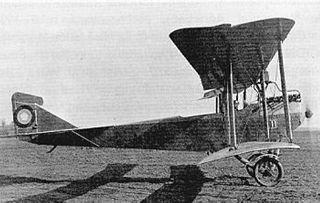
The Aero Ae 01 was a Czechoslovakian military trainer biplane built in 1919 and was Aero's first attempt to modify one of the aircraft designs they had been manufacturing under licence during World War I, the Hansa-Brandenburg B.I. The project was originally designated as Ae 10, but later re-designated to Ae 01. The army operated the aircraft under designation A-1.

The Albatros C.I,, was a twin-seat general-purpose biplanes designed and produced by the German aircraft manufacturer Albatros Flugzeugwerke. It was the first of the successful C-series aircraft operated by the Luftstreitkräfte.

The Albatros B.II, was an unarmed two-seat reconnaissance biplane designed and produced by the German aircraft manufacturer Albatros Flugzeugwerke. It was the aircraft that brought Albatros Flugzeugwerke to the world's attention.
The Benz Bz.III was a six-cylinder, water-cooled, inline engine developed in Germany for use in aircraft in 1914. Developing 112 kW (150 hp) at 1,400 rpm from 14.3 L, it powered many German military aircraft during World War I. It was replaced in production by the unrelated Benz Bz.IIIa. and eventually the V-8 Benz Bz.IIIb. The Benz Bz.III was built under licence in Sweden by AB Thulinverken, known as the Thulin E.
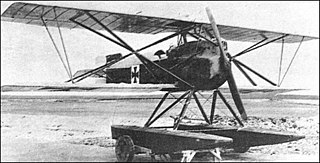
The Hansa-Brandenburg KDW was a German single-engine, single-seat, fighter floatplane of World War I. The KDW – Kampf Doppeldecker, Wasser – was adapted from the Hansa-Brandenburg D.I landplane to provide coastal defence over the North Sea.

The Hansa-Brandenburg W.29 was a German two-seat fighter floatplane which served in the closing months of World War I with the Imperial German Navy's Naval Air Service from bases on the North Sea coast. In concept the aircraft was a monoplane version of the biplane Hansa-Brandenburg W.12, although there were many structural differences between the two.

Entering service in 1915, the Rumpler C.I,, two-seater single-engine reconnaissance biplane, was one of the first German C-type aircraft, and also one of the longest serving in its class during World War I, being retired from the last front line units only in early 1918.

The Hansa-Brandenburg C.I, also known as Type LDD, was a 2-seater armed single-engine reconnaissance biplane designed by Ernst Heinkel, who worked at that time for the parent company in Germany. The C.I had similarities with the earlier B.I, including inward-sloping interplane bracing struts. Like other early-war Austro-Hungarian reconnaissance aircraft, such as C-types of Lloyd or Lohner, the Type LDD had a communal cockpit for its crew.

The Hansa-Brandenburg CC was a single-seat German fighter flying boat of World War I. It was used by both the Kaiserliche Marine and the Austro-Hungarian Navy.

The Lohner L was a reconnaissance flying boat produced in Austria-Hungary during World War I. It was a two-bay biplane of typical configuration for the flying boats of the day, with its pusher engine mounted on struts in the interplane gap. The pilot and observer sat side by side in an open cockpit, and both the upper and lower sets of wings featured sweepback.
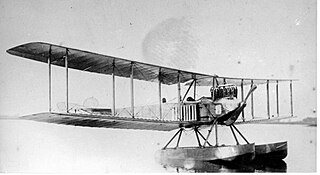
The Hansa-Brandenburg W was a reconnaissance floatplane produced in Germany in 1914 to equip the Imperial German Navy. Similar in general layout to the Hansa-Brandenburg B.I landplane, the W was a conventional three-bay biplane with unstaggered wings of equal span. The pilot and observer sat in tandem, open cockpits, and the undercarriage consisted of twin pontoons.
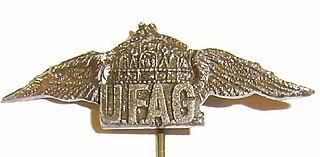
UFAG, was a Hungarian aircraft manufacturer formed by the Ganz Works and the Manfred Weiss Works in Budapest in 1912. They built aircraft of their own design as well as under licence from Lohner and Hansa-Brandenburg.
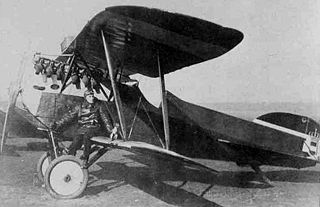
The Phönix D.I, with the D.II and D.III variants, was an Austro-Hungarian First World War biplane fighter built by the Phönix Flugzeug-Werke and based on the Hansa-Brandenburg D.I.

The Rumpler B.I was a military reconnaissance aircraft produced in Germany during World War I.

The Phönix C.I, given serial numbers in the Phönix 121 range, was an Austro-Hungarian First World War reconnaissance and general-purpose Biplane built by Phönix and Lloyd.
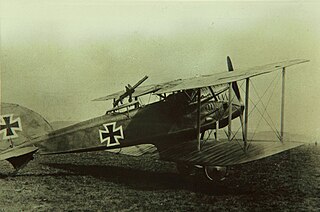
The Halberstadt C.III was a German single-engined reconnaissance biplane of World War I, built by Halberstädter Flugzeugwerke.

The Hansa-Brandenburg W.18 was a single-seat German fighter flying boat of World War I. It was used by both the Kaiserliche Marine and the Austro-Hungarian Navy.

















